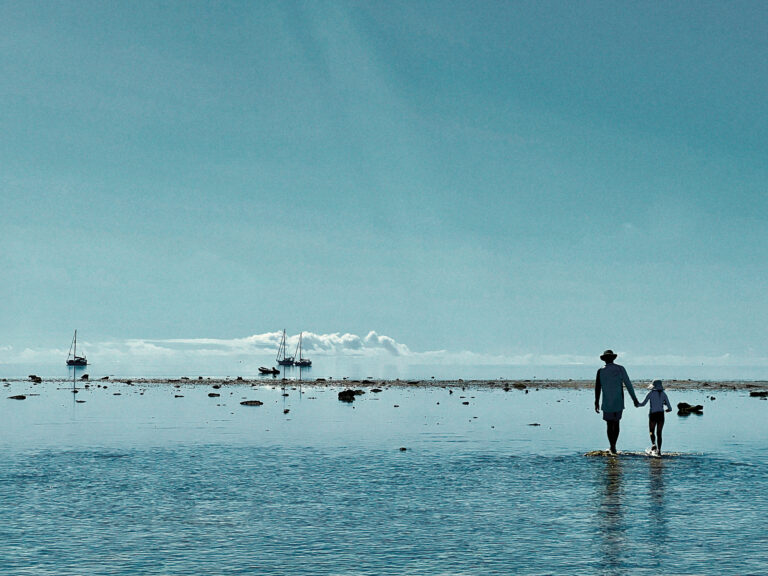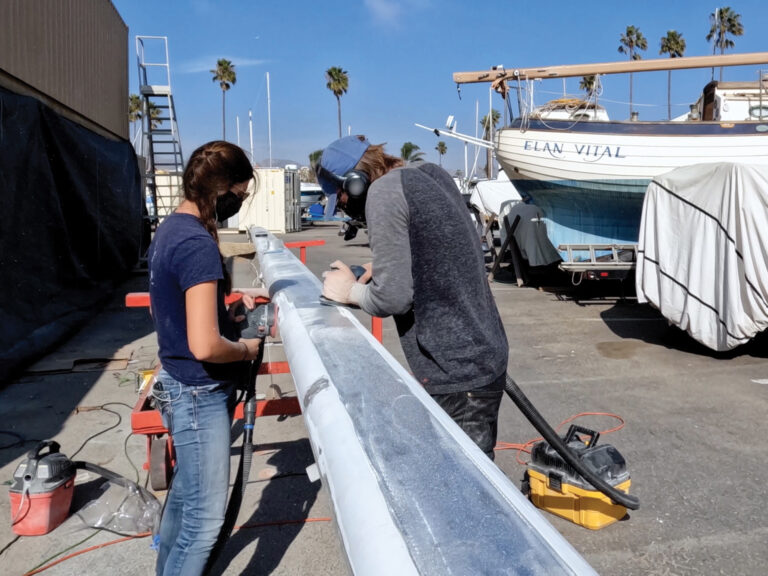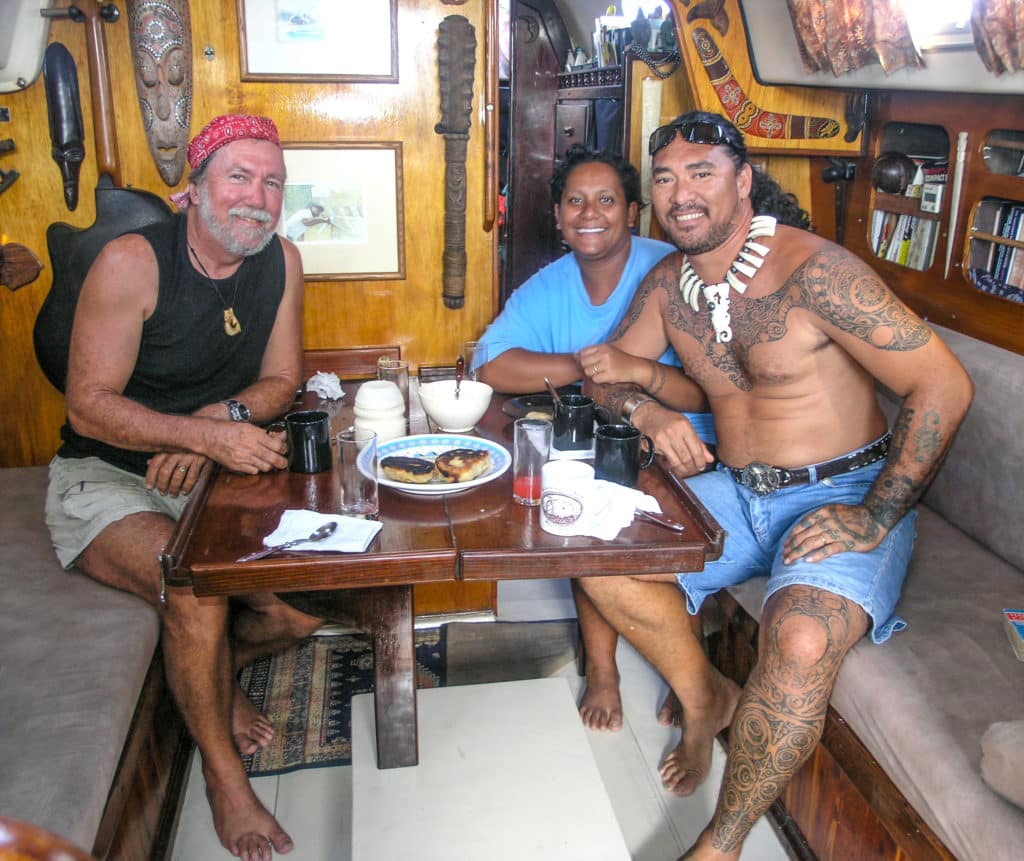
One of the French words for “memory” is souvenir — and my wife, Carolyn, and I have collected plenty of both in the 47 years we’ve cruised together. One of our major sources of joy while sailing around and around the planet is collecting small bits of art and oddities, mostly at the affordable $5 to $20 level. In one sense, this makes us floating art collectors; in another, it allows us to visually manifest our cruising adventures in the coolest, most stylish manner possible.
Obviously, display space is limited on a boat. Weight is a factor. And, of course, our cruising funds are precious. Nonetheless, these international artifact hunts ashore are great fun, and the interior of Ganesh is breathtakingly unique.
Here’s how we do it: We find cheap or free stuff ashore that wows us, lug it back to the boat, and nail it to a bulkhead. Simple, eh?
Or, I should say, that’s how we did it on Wild Card, the $3,000 Hughes 38 that we circumnavigated aboard twice.
“Wait!” a visiting guest protested as I was about to tack another tiki figurine onto the main bulkhead. “You can’t! It’s a boat, not a curio shop!”
“You’re wrong.” I smiled. “Wild Card is much more than a boat. It’s our home, and just as much of a reflection of its inhabitants as any dirt dwelling ashore. Why not House Beautiful Afloat, Fatty-style? We like being surrounded by beautiful things. Our whole lives are spent aboard. We’re not camping, for heaven’s sake!”
“But,” the guy blubbered, holding up his hand in the universal halt gesture, “it will hurt your vessel’s resale value!”
I slapped my forehead in disbelief. What kind of a bean-counter did he take me for?
“I’ve never admired a yacht interior that looked as impersonal as a hotel room,” I said as I forcefully drove the bronze nail into the varnished mahogany bulkhead. “Besides, Carolyn and I want our home to be a reflection of our lifestyle: totally nuts and utterly bizarre!”
We had no master plan on Wild Card. Everything — each item, its attachment and its location — was random. The end result was, to our eye at least, beautiful, with 20-some years of world cruising displayed harmoniously on a boat that cost less than the stereo in my daughter’s car.
However, we’ve gone about the recent interior decoration of the new-to-us Ganesh, our 43-foot French ketch, in a slightly different manner, because 1) we were starting fresh, and 2) the sloppy plywood work on Wild Card cried out for distraction, while the stunning custom teak joinery of our Amphitrite 43 does not.
Plus there was the matter of continuity. We had a new boat, but we were still the same people. So we wanted Ganesh to look the same and yet be totally different.
Another key to our design philosophy has been that each item has to have its own tale. I’m a story guy. Words are at the core of who I am. Thus, something has to be visually beautiful and have its own unique account of geo-acquisition to earn a spot aboard Ganesh.
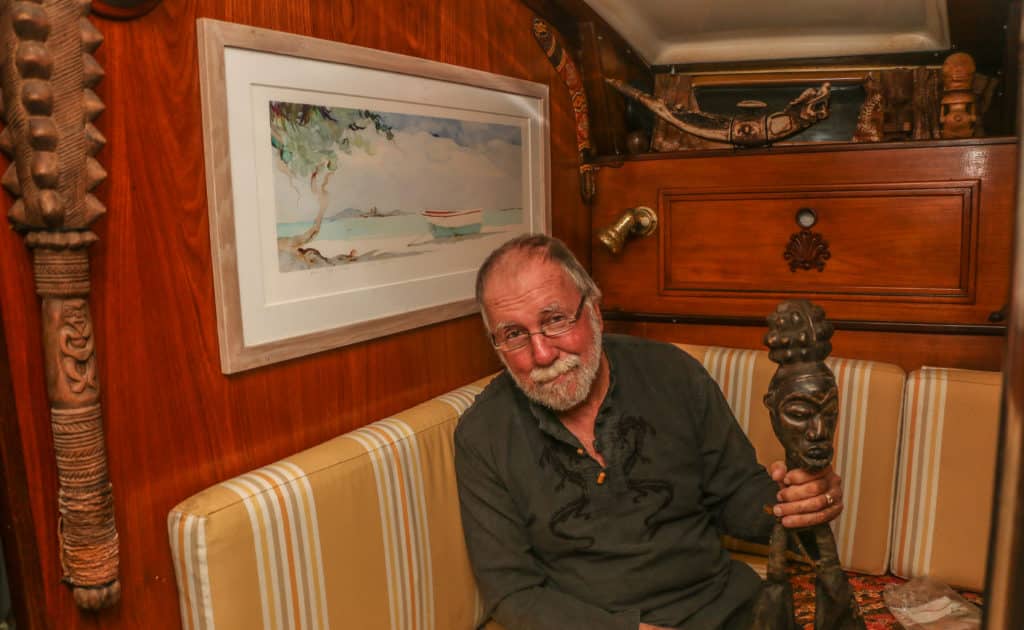
Splendid watercolors of Anguilla’s native sailing craft worked extremely well on Wild Card. Ours featured the famed Eagle and its West Indian builder, Egbert Connor. I’d raced aboard these exciting traditional boats and had visited Egbert’s modest boat shed for what it was: a shrine to Caribbean maritime history. Plus, they were cool paintings by the French watercolorist Ms. Curt. They instantly instilled tranquility. And as an added bonus, they perfectly illustrated the beauty of our Caribbean home to our many shipboard visitors around the world.
For Ganesh we considered another painting by the same French artist, but really wanted a watercolor from Caribbean artist Antoine Chapon (yes, French again). Sadly, we couldn’t afford one.
Then, one day soon after buying Ganesh, I happened to stumble upon Monsieur Chapon strolling down the streets of Marigot in French St. Martin. I’d admired his work for over a decade, and thus approached cautiously. Suddenly he whirled and cried, “Fatty Goodlander, at last!”
Soon we were in his studio, tossing drawings right and left, searching for the perfect image. We found it: a wide watercolor of an Anguilla sloop named Alma. With some judicious framing, we engineered it to fit our bulkhead space perfectly. Just to gild the lily, I added a (nearly) hidden low-light 12-volt spotlight for night illumination, so the painting glows at dusk.
Now, dozens of times a day, I glance at this anchor of our interior design and think of our Caribbean home isle of St. John, West Indian racing, Caribbean maritime history, the Lesser Antilles, international art, and our new friend Antoine Chapon. Everything displayed aboard Ganesh stirs up a similar number of memories.
Since we are always traveling, our shipboard visitors are interested in our Caribbean home and our adventures, so a 12-volt illuminated globe is the second focal point of our main cabin.
We can afford to buy more art than we end up displaying, since we are paying such small amounts for our acquisitions (small to us — often not so small to the artist), so we also give away almost as much art as we buy. This is a win-win-win — for the artist, for the honored recipient of the unique gift, and for us.
We love kids and often have them aboard. I have dozens of tall tales that go along with each tiki figurine to tell children (ages 6 to 60) about our sailing adventures. These vary according to the culture, sophistication and age of our visitors. (And yes, we have “modesty dresses” we put on certain of the ruder carvings when we have young visitors.)
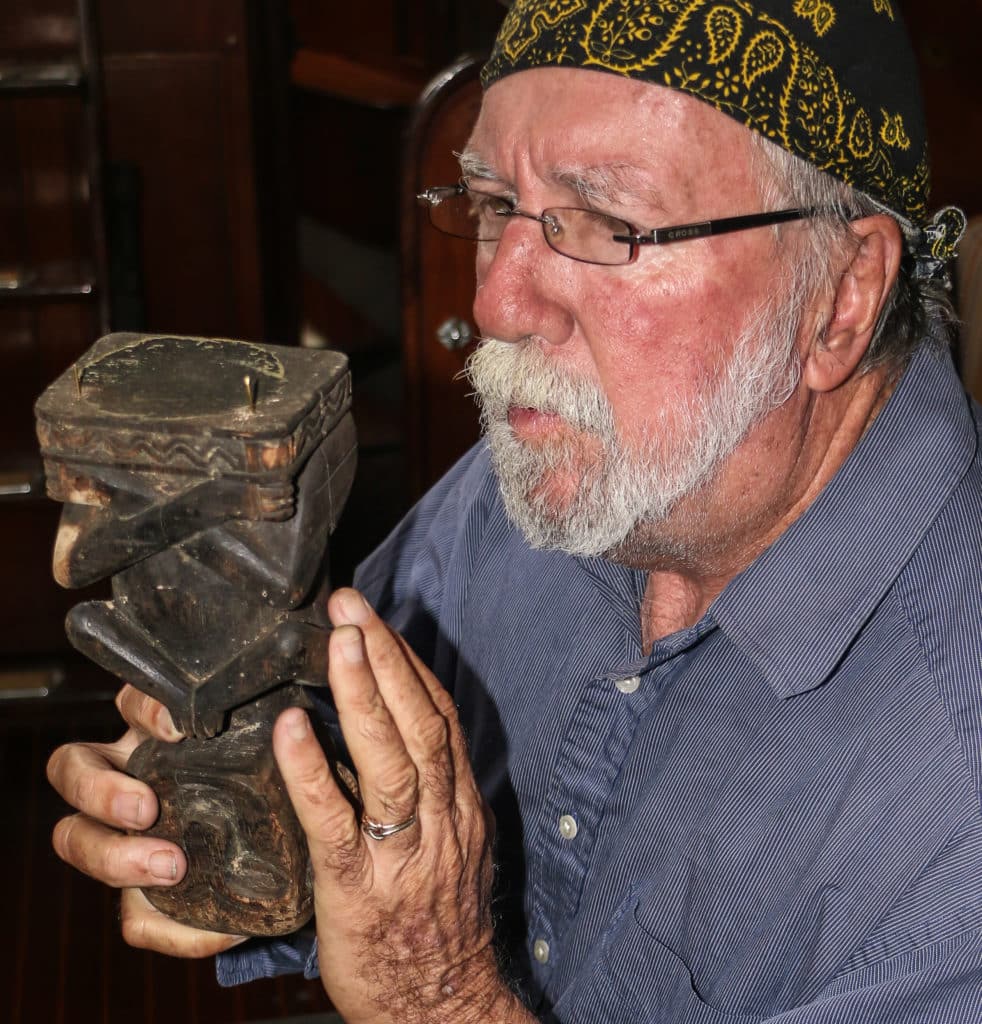
Of course, on a boat, everything has to do double duty — even the artifacts on display. Thus my father’s World War II sextant resides on a bulkhead, not in its box. I still occasionally shoot a noon sight just to keep my skills up in the celestial game. Some items are more trouble than others. My displayed collection of opium pipes really interests U.S. Coast Guard boarding parties and their canine sailors. Since I play guitar, often on the beach at sailor jams, I have a collection of portable percussion instruments aboard. These are usually a struggle to clear into New Zealand. (“You’re attempting to smuggle in Mexican seeds in those maracas,” one overly strict customs official in Whangarei observed.)
Are there carved collectibles to avoid? Sure. Anything with rope or fabric is hard to clean, soon looks dirty, and eventually rots. Check carefully for termites. Obviously, pictures have to be framed well, as water-resistant as possible, and hung securely in a dry spot. (While we’d prefer glass, we opt for plastic in the name of offshore safety.)
Our grandkids love our larger figurines and carvings in particular. Many of our artifacts have crazy outfits Carolyn has sewn for them, and loony hats too. These provide an endless source of entertainment. Freaky Tiki, for example, hates it when the boat heels and his hat falls off. Six-year-old Sokú Orion immediately screams, “Freaky Tiki lost his hat!” at the top of her lungs, and then she and her sister, Tessa Maria, dash into our aft cabin to replace it.
Here’s the bottom line: Everything about our cruising lifestyle is a reflection of Carolyn and I, and our vessel most of all. I have zero use for fashion, but I’m totally enthralled with style regardless of the medium of artistic expression. Just because I’ve lived aboard for 57 years doesn’t mean I treasure my art collection any less than Andrew Mellon’s descendants (who happen to be wealthy enough to use the National Gallery as a well-lit high-security storage area). We have less space, true, but we luxuriate in our eclectic collection just as much.
Our payoff is simple: the glowing faces of our shipboard guests. “Everywhere you look, there’s something amazing to see,” one told us recently.
“Just like the whole world,” I replied.
The Goodlanders are sailing the coast of South Africa, keeping their eyes peeled for souvenirs special enough to decorate Ganesh.






